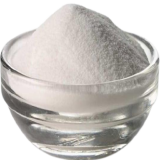|
|
|
Acetic Acid Glacial & Solution ---- Boric Acid ---- Formaldehyde Solution ---- Fumaric Acid ---- Lactobionic Acid ---- Maleic Acid ---- Malic Acid ---- Oleic Acid ---- Phosphoric Acid ---- Phosphorous Acid ---- Phthalic Acid ---- Picolinic Acid ---- Picric Acid ---- Pidolic Acid ---- Propionic Acid ---- Pyruvic Acid ---- Salicylic Acid ---- Selenious Acid ---- Sorbic Acid ---- Stearic Acid ---- Succinic Acid ---- Sulfamic Acid ---- Tartaric Acid ---- Undecylenic Acid |
|
Phthalic Acid SDS MSDS of Manufacturers & Exporters
Phthalic Acid SDS, Safety Data Sheet 1. Product Identification Product Name & Other Names: Phthalic Acid or 1,2-Benzenedicarboxylic acid; o-dicarboxybenzene or o-Benzenedicarboxylic acid. 2. Hazards Identification GHS, Globally Harmonized System Classification in accordance with 29 CFR 1910 Skin irritation Category 2, H315 Labeling Regulation EC 1272/2008 (CLP) & GHS
Signal Words: Warning Hazard statements: Precautionary statements: 3. Composition/Information on Ingredients Product Name & Other Names: Phthalic Acid or 1,2-Benzenedicarboxylic acid; o-dicarboxybenzene or o-Benzenedicarboxylic acid. 4. First Aid Measures Always seek medical attention after first aid measures are provided. Inhalation: If inhaled, remove to fresh air. If not breathing, give artificial respiration. If breathing is difficult, give oxygen and get medical attention immediately. 5. Fire Fighting Measures Fire: As with most organic solids, fire is possible at elevated temperatures or by contact with an ignition source. 6. Accidental Release Measures Personal precautions, protective equipment and emergency procedures: Avoid breathing dust/fumes/gas/mist/vapors/spray. Use individual protective equipment (waterproof boots, suitable protective clothing, safety glasses, etc). Do not approach facing the wind. 7. Handling and Storage Precautions for safe handling: Apply according to good manufacturing and industrial hygiene practices. Ensure proper ventilation. Wash thoroughly after handling. Do not drink, eat or smoke while handling. Avoid contact with skin, eyes and clothing. Minimize dust generation. Avoid breathing dust/fumes/gas/mist/vapors/spray. Keep container tightly closed. Avoid ingestion and inhalation. Use individual protective equipment (waterproof boots, suitable protective clothing, safety glasses, etc). 8. Exposure Controls/Personal Protection Airborne Exposure Limits: None established. 9. Physical and Chemical Properties Appearance: White crystals. 10. Stability and Reactivity Stability: Stable under ordinary conditions of use and storage. 11. Toxicological Information Oral rat LD50: 7900 mg/Kg 12. Ecological Information Environmental Fate: Sufficient information is not available. When released into the soil, Phthalic Acid is expected to leach into groundwater. When released into the soil, this material is expected to biodegrade. When released into water, this material is expected to biodegrade. This material is not expected to significantly bio accumulate. 13. Disposal Considerations Whatever cannot be saved for recovery or recycling should be managed in an appropriate and approved waste disposal facility. 14. Transport Information DOT USA, TDG Canada & ADR/RID Europe: Not controlled 15. Regulatory Information USA: Section 16 - Additional Information DISCLAIMER: The information and recommendations set forth herein (hereinafter "Information") are presented in good faith and believed correct as of the date hereof. It is compiled from various sources and it is not necessarily all inclusive nor fully adequate in every circumstance. In addition, these suggestions should not be confused with nor followed in violation of applicable laws, regulations, rules or insurance requirements applicable. This MSDS sheet is intended only as a guide to the appropriate precautionary handling of the material by a properly trained person using this product. Individuals receiving the information must exercise their independent judgment in determining its appropriateness for a particular purpose. |
Crystal Clear Products and the group companies are manufacturing chemicals since several decades. We have automatic vacuum operated titanium evaporators and SS316 equipments to produce top grade of chemical products. We have toll manufacturers and representatives in China, UAE, Europe, Canada & USA and agents & customers in all countries like USA, Canada, Europe, UAE, South Africa, Tanzania, Kenya, Egypt, Nigeria, Uganda, Turkey, Mexico, Brazil, Chile, Argentina, Bangkok Thailand, Kaula Lumpur Malaysia, Dubai UAE etc. & sales representative in Chicago, Houston New York & Los Angeles, USA. Associated units are FDA-GMP certified, Halal and/or Kosher certified, REACH registered, ISO-9001, ISO-22000 HACCP certified, Crisil Rated.
Contact Phthalic Acid IP BP Ph Eur EP JP USP NF ACS Analytical Reagent FCC Food Grade manufacturers exporters at:

Crystal Clear Products
Plot No-C1-1031-9, GIDC Estate, Panoli, Ankleshwar, Gujarat - 393002. India
Telephone Mobile: 91-7506449333; e-mail: info@crystalclearproducts.org
e-mail: info@crystalclearproducts.org
Manufacturers, Suppliers of IP BP Ph Eur EP JP USP NF FCC Food, ACS Reagent GMP Grades of Chemicals like Phthalic Acid





